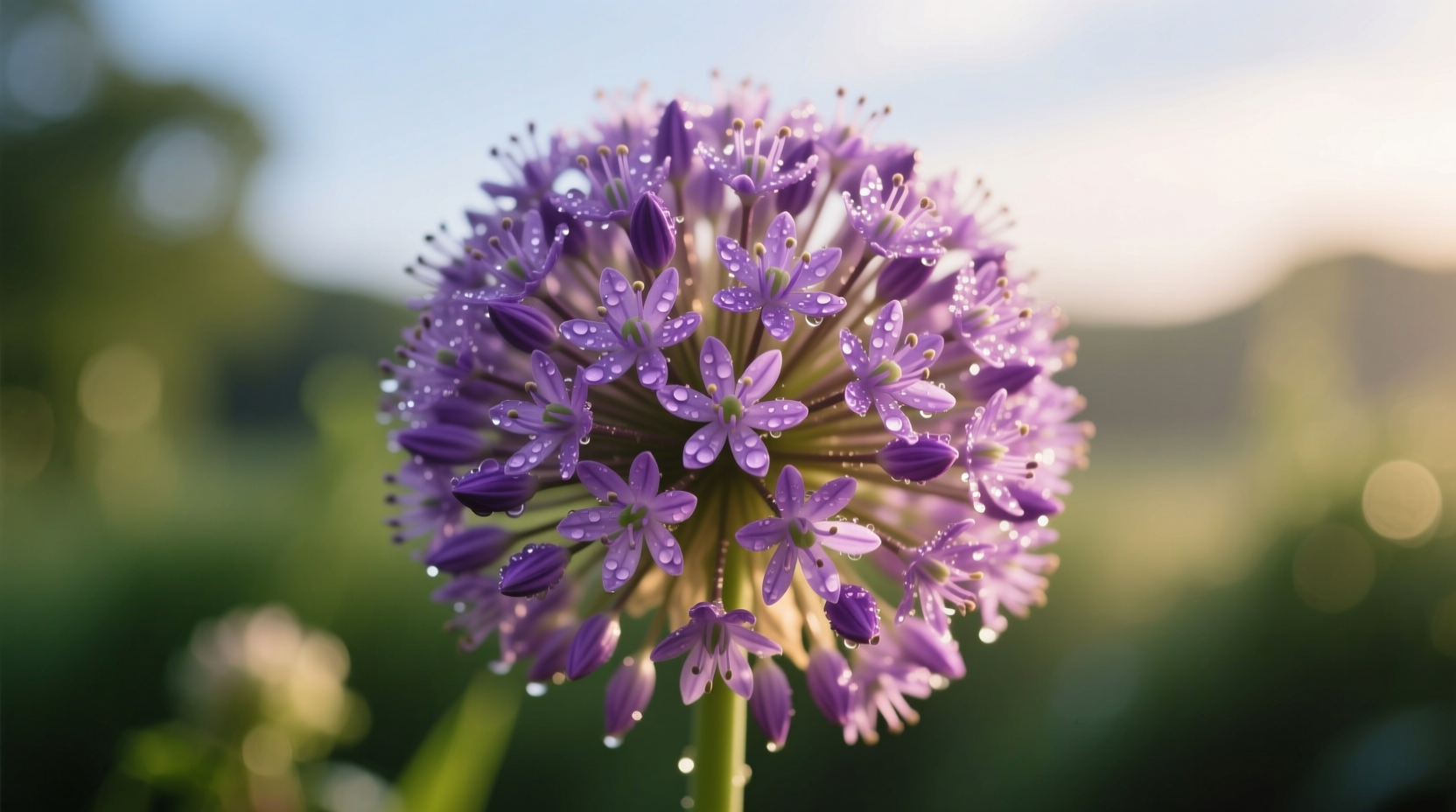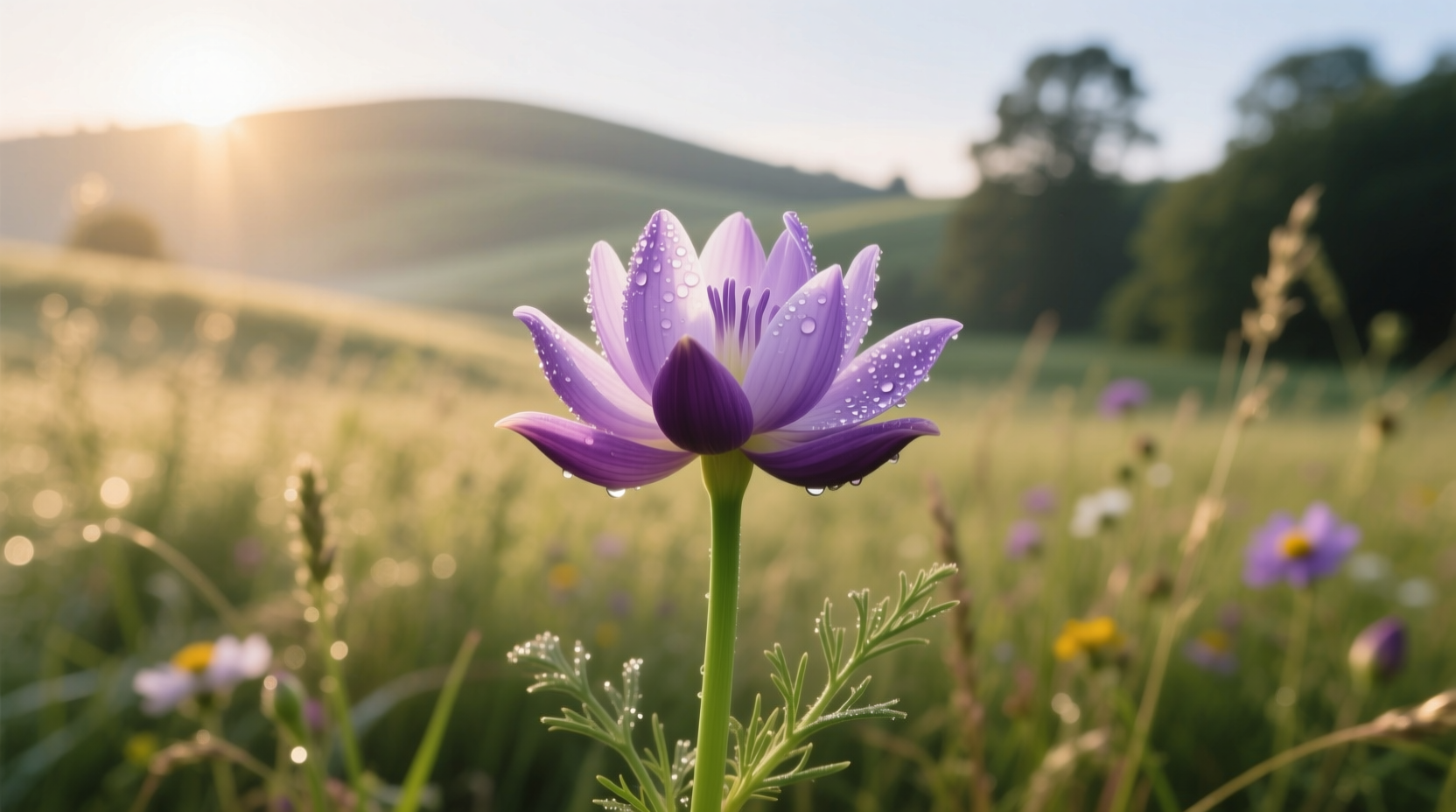Purple onion flowers are the vibrant blooms of certain Allium species, not a specific purple onion variety. These edible flowers come from ornamental alliums like Allium giganteum and culinary varieties such as shallots, offering both visual appeal and culinary versatility in gardens and kitchens.
When you spot those striking purple globe-shaped flowers in a garden or market, you're likely seeing ornamental alliums—not a special purple onion. These blossoms belong to the same family as culinary onions (Allium sativum) but come from different species cultivated primarily for their dramatic floral displays. Understanding what these flowers actually are prevents confusion and unlocks their dual potential as both garden features and edible ingredients.
What Exactly Are Purple Onion Flowers?
Purple onion flowers aren't produced by purple onions themselves. Instead, they come from ornamental allium varieties specifically bred for their impressive blooms. The most common types include:
| Allium Species | Flower Characteristics | Edibility Status |
|---|---|---|
| Allium giganteum | Large purple globes (4-8" diameter) | Edible but mild flavor |
| Allium christophii | Star-shaped lavender blooms | Edible with subtle onion taste |
| Allium schoenoprasum (chives) | Small purple pom-poms | Fully edible, common culinary use |
| Allium cepa (culinary onions) | White or pale purple clusters | Edible but stronger flavor |
This botanical distinction matters because many gardeners mistakenly believe they've discovered a rare purple onion variety when they see these flowers. According to the USDA Agricultural Research Service, alliums represent one of the most diverse plant genera with over 850 species worldwide, only a fraction of which produce the characteristic purple blooms people recognize.
Edible Potential: Culinary Uses of Purple Allium Flowers
While primarily grown for ornamentation, purple allium flowers offer surprising culinary versatility. Unlike the strong flavor of mature onion bulbs, the flowers provide a delicate onion essence that enhances dishes without overwhelming them.
Chefs commonly use these blossoms in three ways:
- Salad garnishes - The vibrant color adds visual appeal to green salads
- Infused vinegars - Steeping flowers in vinegar creates beautifully colored, subtly flavored bases
- Cheese accompaniments - Scattered over soft cheeses for elegant presentations
When harvesting for culinary use, pick flowers in the morning after dew has dried but before temperatures peak. The University of California Cooperative Extension confirms that allium flowers contain the same beneficial organosulfur compounds as their bulb counterparts, though in lower concentrations.

Growing Purple Allium Flowers: What Gardeners Need to Know
Successfully growing these dramatic blooms requires understanding their specific needs. Unlike culinary onions harvested for bulbs, ornamental alliums prioritize flower production.
Planting Requirements
Plant allium bulbs in fall (September-November) for spring blooms. They thrive in:
- Full sun locations (at least 6 hours daily)
- Well-draining soil (sandy loam preferred)
- Soil pH between 6.0-7.0
Bulb planting depth varies by variety—larger bulbs like Allium giganteum need 6-8 inches of soil coverage while smaller varieties require 3-4 inches. Space bulbs at least 8-12 inches apart to accommodate their substantial root systems.
Seasonal Timeline
Understanding the growth cycle helps maximize flowering potential:
- Fall: Plant bulbs before first frost
- Winter: Bulbs establish root systems
- Early Spring: Foliage emerges
- Late Spring: Flower stalks develop (4-36" depending on variety)
- Early Summer: Peak blooming period (3-6 weeks)
- Late Summer: Seed heads form; foliage dies back
This timeline, documented by the Royal Horticultural Society's trials at Wisley Garden, shows why alliums serve as crucial "bridge plants" between tulip and lily seasons in garden design.
Garden Benefits Beyond Beauty
Purple allium flowers deliver multiple ecological advantages that make them valuable garden additions:
- Pollinator magnets - Their nectar-rich structure attracts bees, butterflies, and hoverflies
- Pest deterrent - Natural allium compounds repel aphids and other soft-bodied insects
- Drought tolerance - Once established, they require minimal watering
- Deer resistance - Most browsing animals avoid alliums
Research from Cornell University's School of Integrative Plant Science demonstrates that gardens incorporating alliums show 23% higher pollinator activity during late spring compared to allium-free gardens. This makes them particularly valuable for supporting declining bee populations.
Common Misconceptions Clarified
Several persistent myths surround purple onion flowers that deserve clarification:
- Myth: Purple onion flowers come from purple onion varieties
Reality: They're from ornamental allium species, not bulb onions - Myth: All purple allium flowers taste strongly of onion
Reality: Flavor intensity varies significantly by species—some are quite mild - Myth: Cutting flowers harms the plant
Reality: Removing spent blooms actually redirects energy to bulb development
Understanding these distinctions helps gardeners make informed decisions about cultivation and use. The Missouri Botanical Garden's research confirms that proper identification prevents accidental harvesting of toxic look-alikes like death camas, which sometimes grows near allium populations in the wild.
Practical Tips for Home Gardeners
Maximize your success with purple allium flowers using these evidence-based techniques:
- Companion planting: Position alliums near roses to deter aphids naturally
- Flower harvesting: Cut stems early morning for longest vase life (7-10 days)
- Winter care: In zones 3-5, apply 2-3" mulch after ground freezes
- Propagation: Divide overcrowded clumps every 3-4 years in early fall
For culinary use, remember that flower intensity decreases as seeds develop. Harvest blooms when fully open but before seed pods form for optimal flavor. The National Gardening Association recommends refrigerating cut flowers in water for 2 hours before using in salads to maintain crispness.
Frequently Asked Questions
Are purple onion flowers actually from purple onions?
No, purple onion flowers come from ornamental allium species, not purple onion varieties. Culinary purple onions (Allium cepa) produce white or pale purple flowers, while the dramatic purple globe flowers belong to different allium species like Allium giganteum bred specifically for ornamental use.
Can I eat purple allium flowers from my garden?
Yes, most purple allium flowers are edible with a mild onion flavor. The most commonly consumed varieties include chive blossoms (Allium schoenoprasum) and ornamental alliums like Allium christophii. Always positively identify plants before consumption and avoid flowers treated with pesticides.
When is the best time to plant purple allium bulbs?
Plant allium bulbs in fall, 2-4 weeks before ground freezes (typically September to November depending on climate zone). This allows root development before winter dormancy. In warmer zones (8-10), refrigerate bulbs for 6-8 weeks before planting to simulate winter chilling requirements.
Why aren't my alliums flowering?
Common reasons for lack of flowering include insufficient sunlight (needs 6+ hours daily), premature foliage removal the previous season, overcrowding, or planting too shallow. Alliums require complete foliage die-back to recharge bulbs. The Royal Horticultural Society notes that younger bulbs may take 2-3 years to reach flowering maturity.











 浙公网安备
33010002000092号
浙公网安备
33010002000092号 浙B2-20120091-4
浙B2-20120091-4